Selecting the appropriate suspension system for a material lifting platform is essential for achieving functionality, safety, and cost-efficiency. The two primary options are wire rope slings and fixed lifting bars. This guide provides an overview of the advantages and limitations of each system to help users make informed decisions based on their specific needs.
Fixed Lifting Bars
Fixed lifting bars are rigid and provide consistent support, making them suitable for certain applications. Key features include:
- Support for Tall Loads: Fixed bars allow for lifting tall items without interference from angled sling legs.
- Structural Simplicity: They offer a straightforward design, often with fewer components to maintain.
However, fixed lifting bars have some constraints:
- Limited Adaptability: While platforms can be customized for current needs, changes in packaging dimensions, facility layouts, or load requirements may reduce their usability over time.
- Ergonomic Concerns: Fixed bars can force workers into awkward positions, potentially leading to discomfort, reduced productivity, or safety issues.
Wire Rope Slings
Wire rope slings are known for their flexibility and adaptability. Key advantages include:
- Ease of Use: Slings can be moved aside for convenient loading and unloading and can be removed with appropriate hardware.
- Adaptability: They are well-suited for a variety of load shapes and sizes.
There are, however, some important considerations:
- Vertical Space Requirements: Slings require adequate vertical space for optimal performance. Smaller sling angles relative to the platform increase tension on the slings and the platform structure, potentially compromising safety. For best results, sling angles of 60 degrees or greater are recommended.
- Load and Space Constraints: Larger platforms and higher load ratings often require longer slings. While floor space might accommodate the platform, insufficient vertical space may limit sling functionality.
- Durability: Wire ropes can be susceptible to corrosion and wear over time. Protective measures, such as stainless steel construction, can mitigate these issues but may increase costs.
Comparison of Cost and Durability
- Fixed Lifting Bars: These are typically more cost-effective for moderate load requirements (under 4,000 lbs) and smaller platform footprints. Powder-coated lifting bars are also resistant to wear and corrosion, extending their lifespan.
- Wire Rope Slings: While flexible, slings may require more frequent replacement due to wear and corrosion, particularly in harsh environments.
Key Considerations for Selection
When deciding between fixed lifting bars and wire rope slings, consider the following factors:
- Vertical Space: If vertical space is limited, fixed lifting bars are generally more practical.
- Platform Size and Load: Slings are advantageous for larger platforms and higher load capacities, provided there is sufficient vertical space.
- Durability Requirements: For environments prone to wear and corrosion, fixed lifting bars may offer better longevity.
Understanding these factors can help in selecting the most suitable suspension system for your material lifting platform, ensuring it meets both current and future operational requirements.
Whatever your specific needs are, Lifting Technologies can use their vast experience to help you make the right choice based on all the factors that are important to you.
